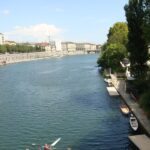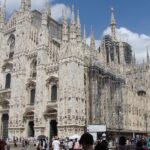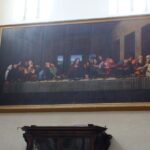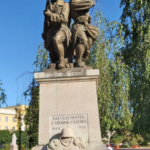A Few Observations from the World Esperanto Congress in Turin
At the turn of July and August, the 108th World Esperanto Congress took place in Turin. Some considered it to be too crowded (with over 1200 people), while others found it rather modest for a centrally located European city. Poland was represented by several dozen people, including a group of 15 from Nowy Sącz who travelled by a small bus, which turned out to be a very convenient solution as it allowed for additional sightseeing along the way, such as visiting the Postojna Caves in Slovenia.
The theme of the congress was “Migration – a Fusion of Human Values,” which is very relevant in Europe. Italy has a strong Esperanto community, as evident from their annual Italian congresses. They made an effort to provide a rich program and excellent organizational conditions.
Everything took place in the vast complex of the Turin Polytechnic University, which has around 36,000 students. Many participants stayed in dormitories near the congress center, not luxurious but reasonably priced. The congress center building had many air-conditioned halls, which allowed for simultaneous lectures and concerts. The main events took place in the Zamenhof Hall, located in a beautifully renovated building that used to be a train repair workshop and is now designated for cultural events.
The first major concert was the national evening, but unfortunately, it was a disappointment for most attendees. The artists, groups, and speakers failed to elicit positive reactions from the audience. A particularly unsuccessful element was expert’s lecture on Dante and the recitation of excerpts from the “Divine Comedy” in various languages, which would have been great for an audience of specialists and those interested in the subject, but not suitable for a national evening. The evening concluded with a magician’s performance, but his tricks were only visible to those in the first two rows, leaving the others unable to see.
Other general events were more successful and at the appropriate level. The invaluable comedy duo of Georgo Handzlik and Saŝa Pilipowicz presented several new sketches, with the funniest one being “Ekskurso,” which humorously highlighted the problems of a semi-automatic telephone booking system for trips.
Concerts, as always, garnered significant interest. There were veteran artists like Kajto, Michael Bronŝtajn, JomO, Kimio, and newcomers like Grazią Barboni and Birda Flut triopo.
A significant attraction was the ball in the Royal Palace gardens, which was open to all participants free of charge.
One of the standard features of congresses is Esperanto courses and the opportunity to take the KER (Esperanto Exam of Competency) exams and language courses of the host country, in this case, Italian.
We could learn not only about the language but also about Italy from several lectures, for example, “The Etruscans – Italy’s Aborigines” or “Maria Montessori – a great educator famous in many countries for her unique educational system for children.
Esperantists who had previously observed the auction during UK did not miss it this time either. The organizers found a worthy successor to Professor Tonkin (who, due to health reasons, can no longer conduct the auction) in Boris Mandriola. His theatrical voice and humorous comments won the audience’s favor and allowed for the collection of a substantial sum to support the 109th congress in Tanzania.
Our distinguished Polish Esperantist, Roman Dobrzyński, almost daily showed his films and provided commentary on his rich activities in the Esperanto movement worldwide and the interesting places he had visited.
The Piedmont region is exceptionally worth visiting, so excursions were organized to all the most interesting places.
Our group, having its own vehicle, planned visits to Milan and the Aosta Valley, including the cities of Aosta and the Fénis Castle, reaching as far as the base of Mont Blanc.
In Milan, we started by seeing Leonardo da Vinci’s “The Last Supper,” for which tickets need to be ordered well in advance. Although the time allocated for admiring the fresco is only 15 minutes, there are always crowds eager to see it.
The next stop was La Scala Museum. Visitors could also sit in a box and experience a bit of the opera performance atmosphere. Many artists dream of performing here, and many famous spectators have occupied seats in the audience.
However, Milan is primarily known for its Cathedral adorned with hundreds of lace-like sculptures that cover the entire building. What is most impressive is not the interior but rather a walk on the designated paths on the roof, where you can see these works of art up close.
Being in Turin, of course, we also explored the city.
In the chapel where the “Shroud of Turin” is kept, the most famous fabric in the world, you can watch a film about the shroud in Polish language. The original shroud is only made available on very important church holidays.
There are two places in the city that offer magnificent views of the city. One is the Basilica of Superga with a 75-meter-high dome and a crypt containing 62 tombs of the famous Savoy family.
The other is the Mole Antonelliana (the tower), a symbol of the city that is featured in all materials about Turin.
Sports enthusiasts will find the Olympic Stadium and Juventus Turin’s stadium here. Car enthusiasts know that the Fiat factory is located in Turin, and those interested in more ordinary things can visit the Lavazza Museum.
It’s a pity that the congress only lasts for a week. It’s a bit too short to fully participate in the program and explore all these wonderful places.
Bożena Kocyk













Leave a Reply